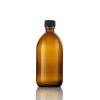I'm sorry to be the bringer of bad news here, but after much research and experimentation I doubt if liposomal Vitamin C can be made with a cheap (or probably any) ultrasonic cleaner. Here is how anyone can confirm this for themselves.
Mix up 8 to 10 grams of Vitamin C, ascorbic acid or sodium ascorbate, using any of the recipes as described in previous posts. Take the full 8 to 10 gram dose at one time and the telltale loose or runny stool will show that bowel tolerance has been reached. If 70 to 80 percent of the mixture was liposomal, then only about 2 to 3 grams of it would be non-liposomal or unencapsulated and should not bring you to bowel tolerance.
More confirmation comes from this comment at amazon.com
FROM MERCOLA's own Customer service!!! - “we have found through our own independent testing facility that while there aren't actually liposomes inside of our capsules, they do indeed contain all of the ingredients necessary to create liposomes when they are taken with water."
http://www.amazon.com/Liposomal-Vitamin-Mercola-Licaps-Capsules/product-reviews/B00BBF9Z40/ref=cm_cr_dp_qt_hist_one?ie=UTF8&filterBy=addOneStar&showViewpoints=0
Also view the links at my first post above. If anyone has a recipe that will pass the 8 to 10 gram test as described above, please let me know the specifics on your recipe. Thanks guys.
Mix up 8 to 10 grams of Vitamin C, ascorbic acid or sodium ascorbate, using any of the recipes as described in previous posts. Take the full 8 to 10 gram dose at one time and the telltale loose or runny stool will show that bowel tolerance has been reached. If 70 to 80 percent of the mixture was liposomal, then only about 2 to 3 grams of it would be non-liposomal or unencapsulated and should not bring you to bowel tolerance.
More confirmation comes from this comment at amazon.com
FROM MERCOLA's own Customer service!!! - “we have found through our own independent testing facility that while there aren't actually liposomes inside of our capsules, they do indeed contain all of the ingredients necessary to create liposomes when they are taken with water."
http://www.amazon.com/Liposomal-Vitamin-Mercola-Licaps-Capsules/product-reviews/B00BBF9Z40/ref=cm_cr_dp_qt_hist_one?ie=UTF8&filterBy=addOneStar&showViewpoints=0
Also view the links at my first post above. If anyone has a recipe that will pass the 8 to 10 gram test as described above, please let me know the specifics on your recipe. Thanks guys.


